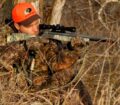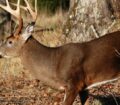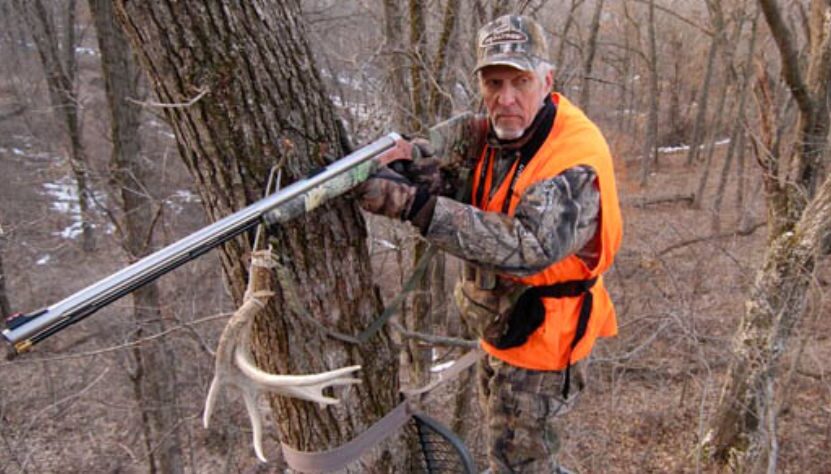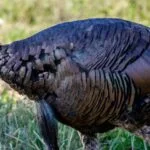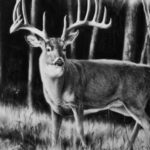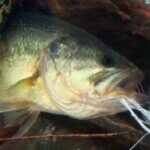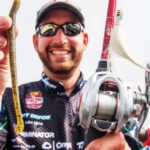One Midwestern avid deer hunter who takes trophy bucks each season told me, “If you’ve scouted all season, you should have a good idea of where the biggest buck on any property will be bedding. On the last day of the season, get as close to that bedding area as you can, and fool him. To learn where the biggest buck holds, look for rubs on big trees in thick cover.
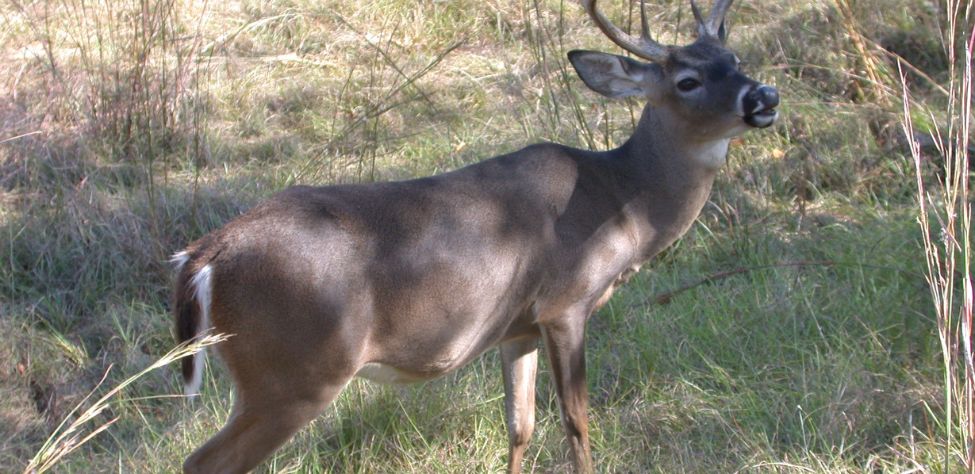
“Once you locate the regions where big bucks travel, I come from downwind, move close to those rubs, and place a buck decoy close to thick cover. (Before using a deer decoy, check the state’s regulations where you’re hunting.) Then I walk back downwind and set out two types of scents/lures – a doe-in heat lure and a dominant-buck urine – to pull a big buck coming in from downwind to my decoy. I want a buck to smell and confirm what his ears and eyes tell him.
“I stand close to the decoy and rattle. I use a buck decoy because when the trophy buck emerges from the thick cover, I want him to think the decoy is a buck invading his territory. A buck decoy pulls a buck out of a thick cover more quickly than a doe decoy, in my opinion, especially when you use rattling antlers at the end of the season. For safety purposes, use this tactic only when you hunt from a tree stand and wear as much hunter orange as possible. As soon as the buck can see out of the thick cover, he’ll spot the decoy.”
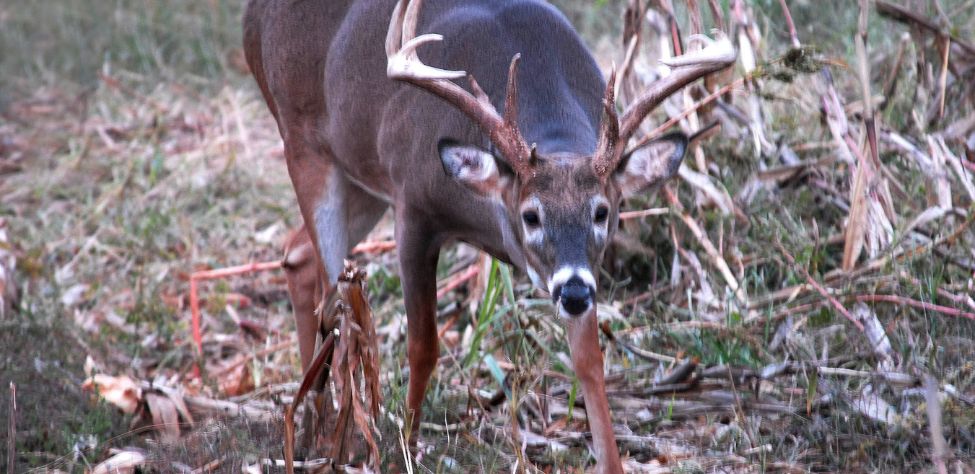
Some midwestern hunters recommend you not utilize the light tickling of antlers many hunters employ when they rattle. Instead, they begin with loud crashing sounds resembling a full-blown buck battle. They want the antlers to sound loud and aggressive to get an instinctive response from bucks holding in the thick cover. You trigger this reaction move by the buck, much like a bass fisherman triggers a reaction strike from a bass. You can expect an instant reaction to the sound of the rattling antlers, causing the trophy buck to break from the thick cover and run into the opening – looking for a rival buck before he can think about what he’s done.
Some Midwestern hunters prefer to rattle continuously for a minute or so at first light. Then they wait 5 or 10 minutes and give a light rattling sequence. Before you begin your second rattling sequence, look over your area intently because many times, the buck may stand close, and you don’t want the buck to spot you moving.
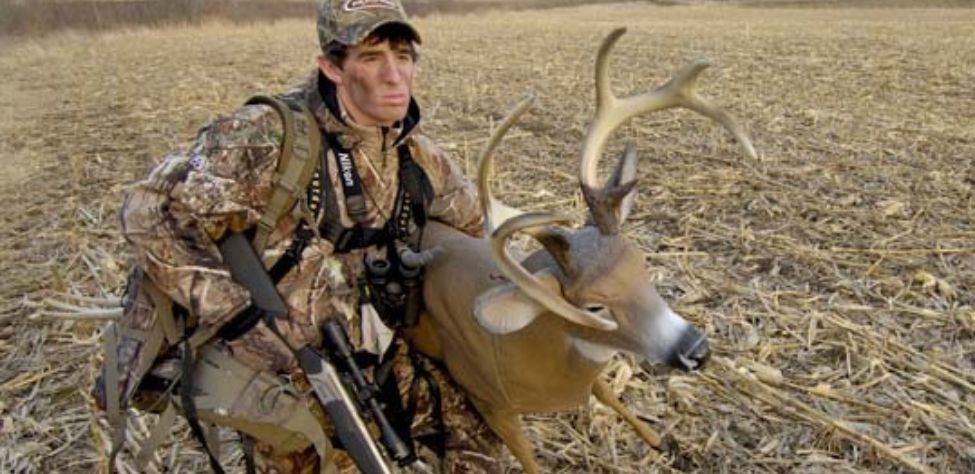
Don’t start your second rattling sequence until you can’t see the buck, or more importantly, the buck can’t spot you. Then rattle lightly for 1-1/2 to 2 minutes, and stop. Wait 30 minutes before beginning the entire sequence once more. If by mid-morning you haven’t rattled up a buck in the Midwest, meet up with a friend and make two-man drives, using one hunter as a driver and the other as a stander in thick-cover areas until the day’s end. However, the rattle-decoy-buck-lure tactic consistently produces big bucks for midwestern hunters.

How to Hunt and Take Big Buck Deer on Small Properties
In this book, you’ll hear from 14 hunters who either have gained permission or leased properties as small as six acres to as much as 250 acres, and how they consistently take older-age-class bucks off these little lands.
VERSIONS: AUDIBLE, KINDLE & PRINT

Jim Crumley’s Secrets of Bowhunting Deer
Using a black magic marker and a gray work jumpsuit, Jim Crumley of Buchanan, Virginia, drastically changed the nature and purpose of hunting camouflage when he created the first sportsman’s camouflage – Trebark. Crumley’s love of bowhunting and his desire to be more invisible changed hunting clothing forever.
In this hunting guide, he shares the wisdom that he’s learned throughout his lifetime about how to be a hunter, how to find a deer lease, how to scout for deer, and more.
Special features include how to:
- Have a magic 60 acres to hunt
- Decide the best equipment to use
- Find deer year-round
- Locate land to hunt
- Know the best place to put your tree stand
- Get bucks within bow range
VERSIONS: AUDIBLE, KINDLE & PRINT

How to Hunt Deer Like a Pro
How do you know if the land you hunt has a trophy deer on it? Wildlife manager Bob Zaiglin, of Uvalde, Texas and Jim Crumley, the father of modern-day hunting camouflage, tells you how to find out. GPS can make finding and taking that trophy buck easier. This hunting guide will teach you how to hunt big bucks where no one else can find them, how to call deer, and how to become versatile as a deer hunter, so that if one deer tactic doesn’t work, another one will.
In the chapter, “How to find Bucks at Scrape,” Dr. Keith Causey, retired professor of Wildlife Science at Auburn University, describes the best way to hunt a scrape.
Brad Harrison of Neosho, Missouri, is a nationally-known videographer, professional deer hunter and master at calling deer. Another master is Will Primos of Primos Game Calls. These two experts will tell the best deer calls and when to use them in this book.
And for over 20 years, Bo Pitman, lodge manager of White Oak Plantation, has been studying deer movement patterns. He explains what types of conditions are best for predicting deer movement.
VERSIONS: AUDIBLE, KINDLE & PRINT

Deer hunting and deer hunters are drastically changing each year. To learn new techniques for hunting deer and have more places to hunt, I’ve interviewed some of the best deer hunters in the nation and share their tactics in How to Hunt Deer Like a Pro: Volume II.
In Chapter 10, Jacob Lamar tells you his tactics for consistently taking older-age-class bucks on public lands in several states. Chapter 11, Bob Walker explains how to find places on public lands where you can hunt that 99 percent of the other hunters never have considered hunting. The Bonus Chapter with David Ramey tells you how, where, when and with what equipment to take big Kansas bucks on public lands by hunting in 100-degree weather when others won’t hunt.
Chapter 13, Mark Drury, his family and his guests take mature bucks every season by having more small places to hunt rather than one large property. Drury explains the strategy of having satellite farms to hunt that only may be 50-150 acres each or less. Chapter 15, Pat Reeve, who hunts far-northern states and Canada, says, “I don’t like hunting for mature bucks until the weather is 20 degrees or less.” Chapter 4, Dr. Larry Marchinton says that funnels are the most-reliable stand sites to hunt for big bucks and tells why.
VERSIONS: AUDIBLE & PRINT

